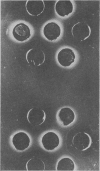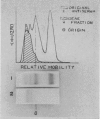Abstract
The agar double-diffusion precipitation test was investigated to detect hog cholera virus in splenic and pancreatic tissues of swine. Special attention was given to the conditions influencing the sensitivity and specificity of the test. These studies emphasize the strict techniques and methods required in the test in order to detect specific antigen — antibody reaction. Absorption studies performed on serum fractions prepared by DEAE cellulose chromatography and studied electrophoretically, indicated the specific reaction was given by fractions, migrating in the gamma-globulin region and was absorbed by infected but not by normal spleens. The sensitivity of the test is dependent to a great extent on the successful liberation of the viral antigen from the tissue.
Full text
PDF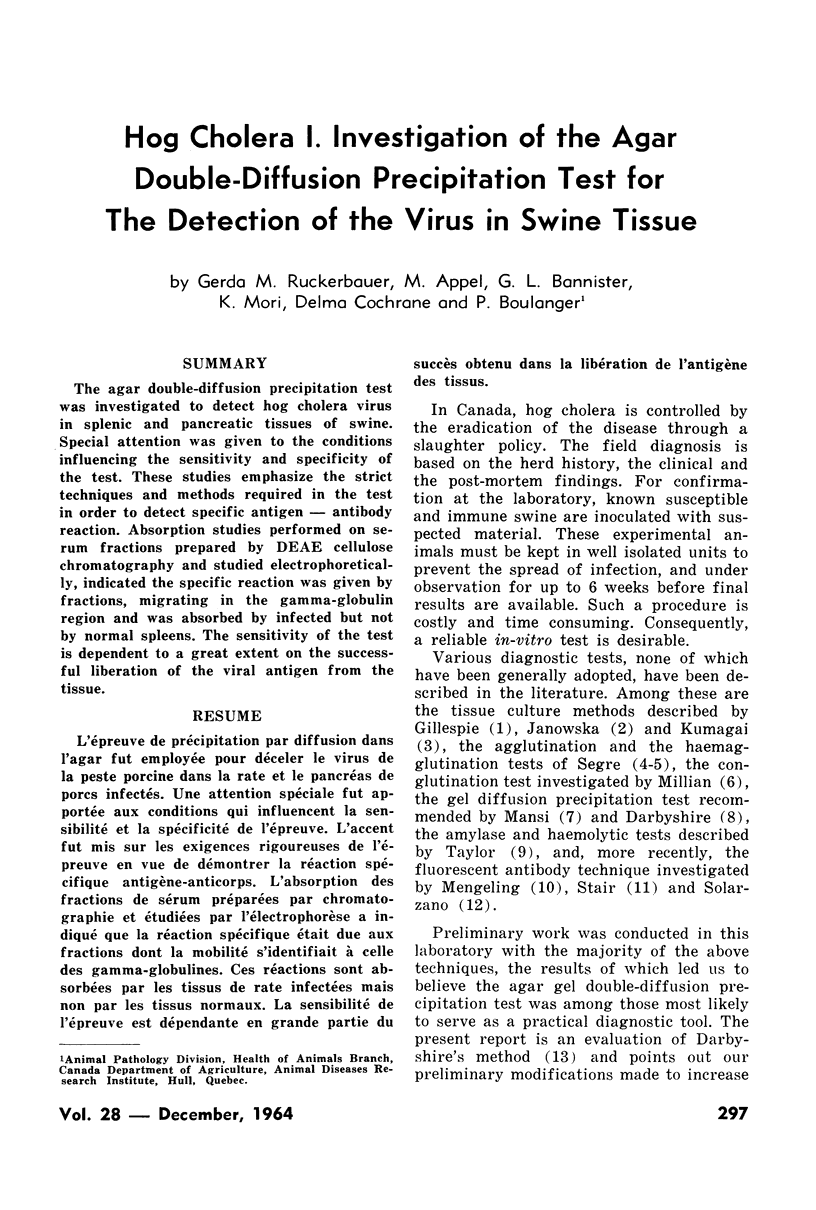
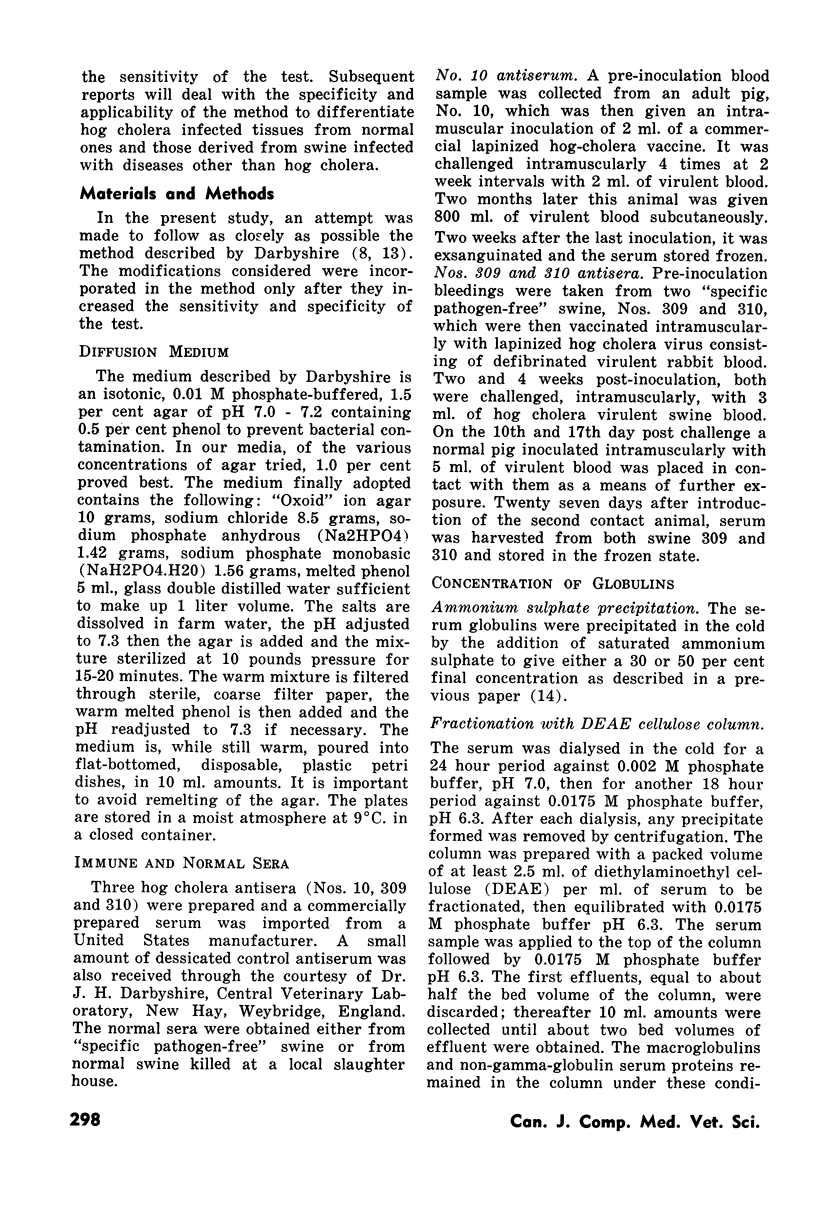
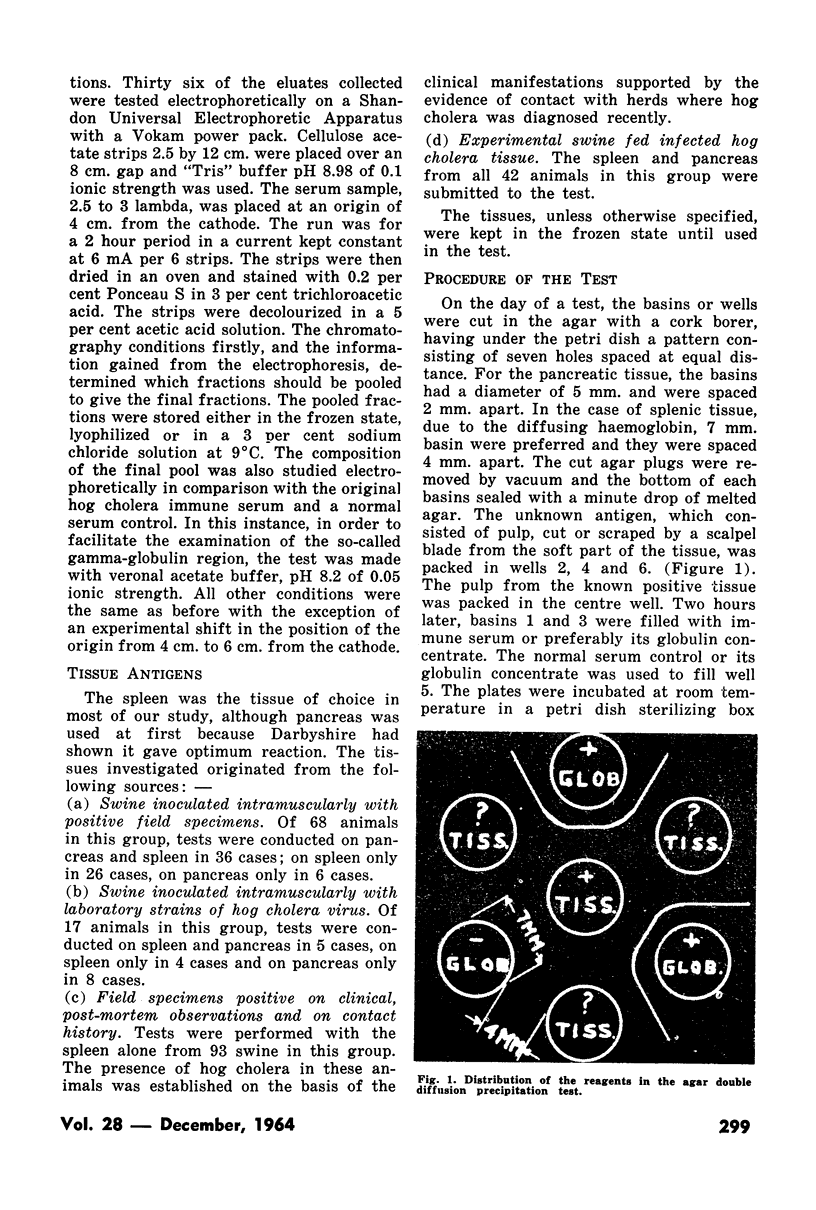
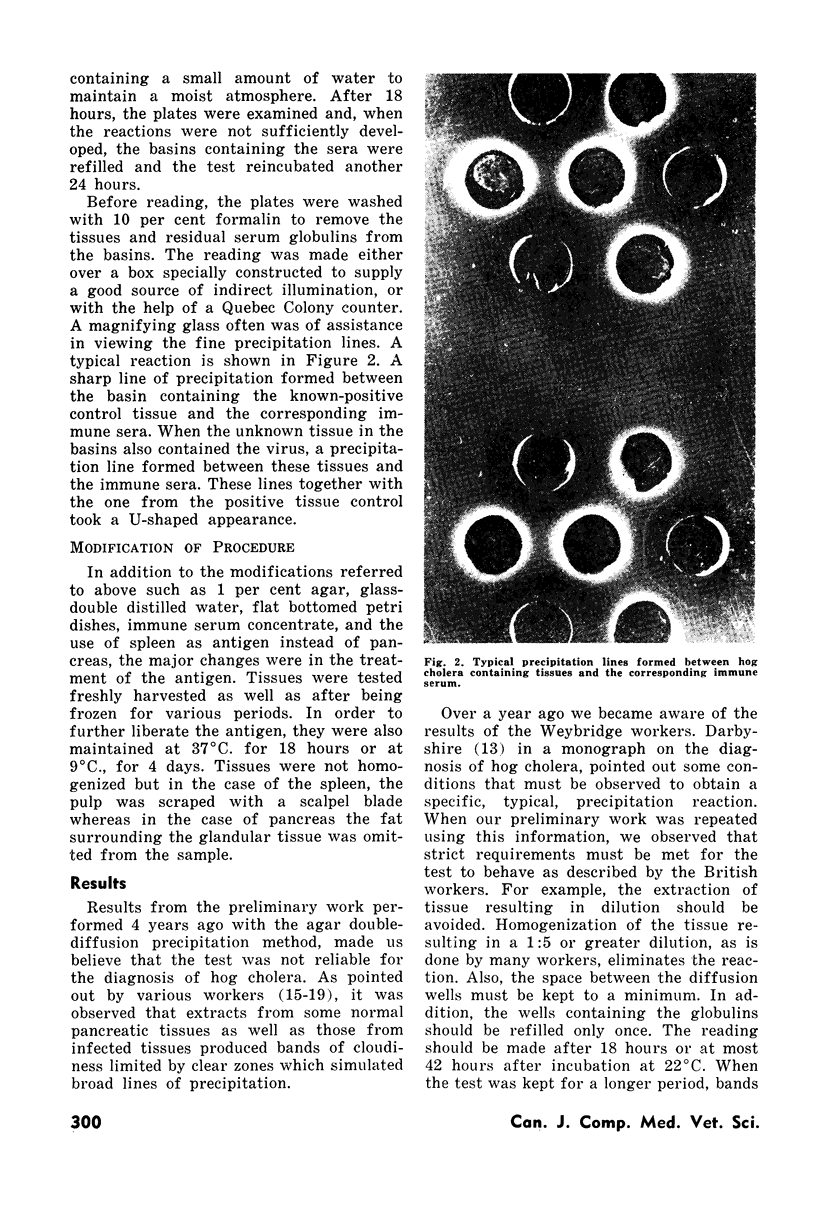
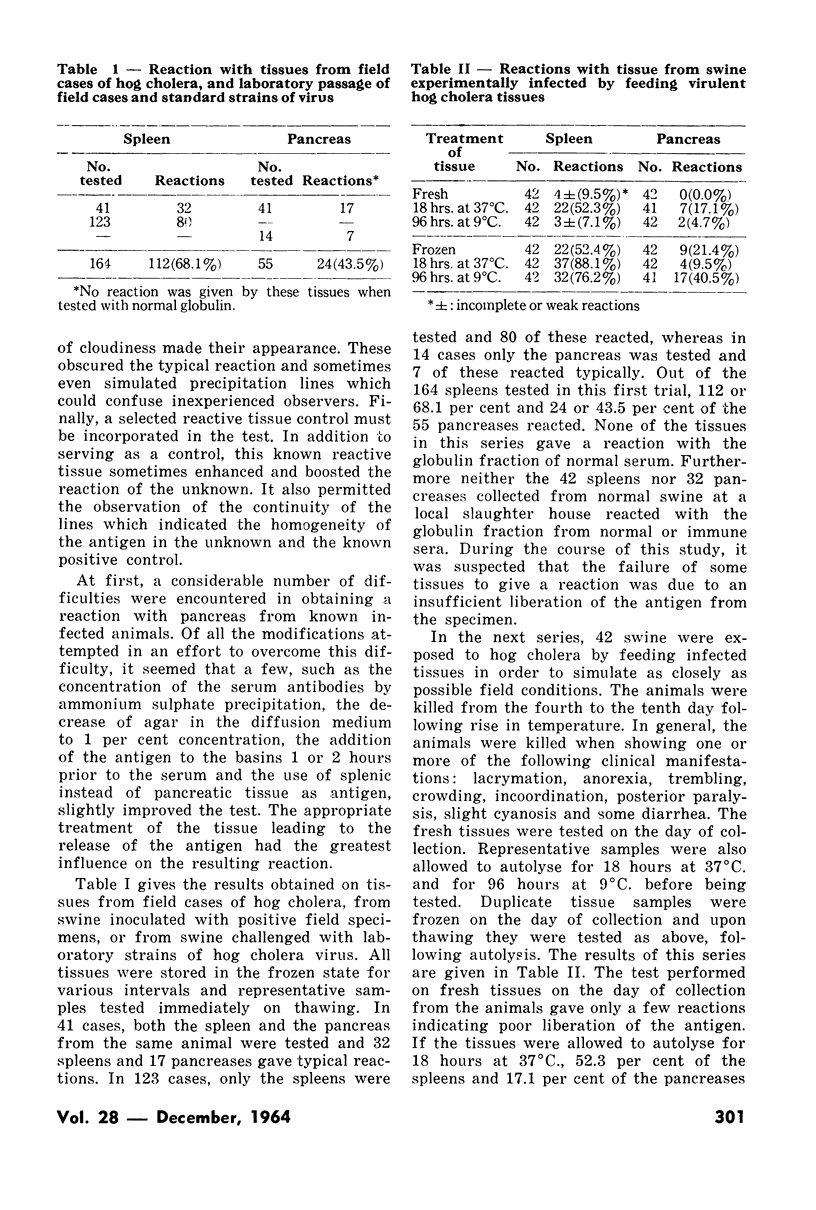
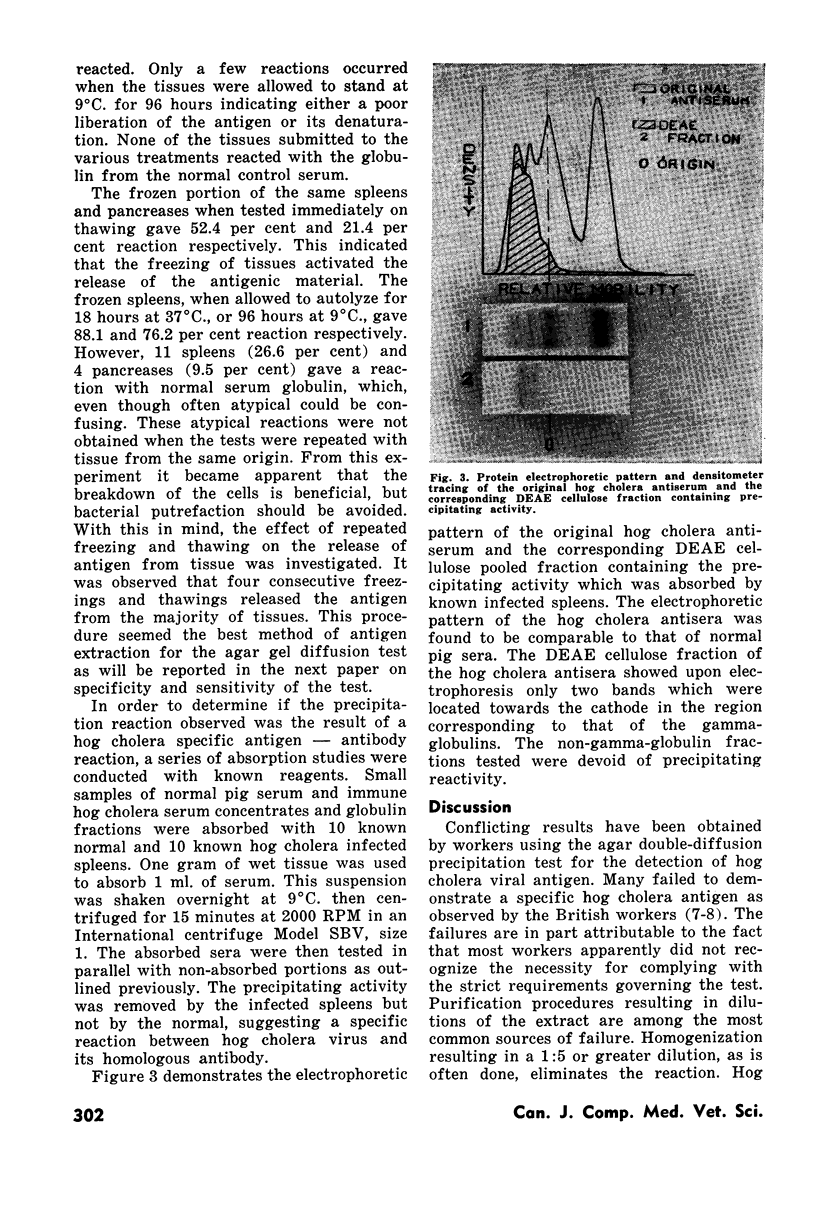
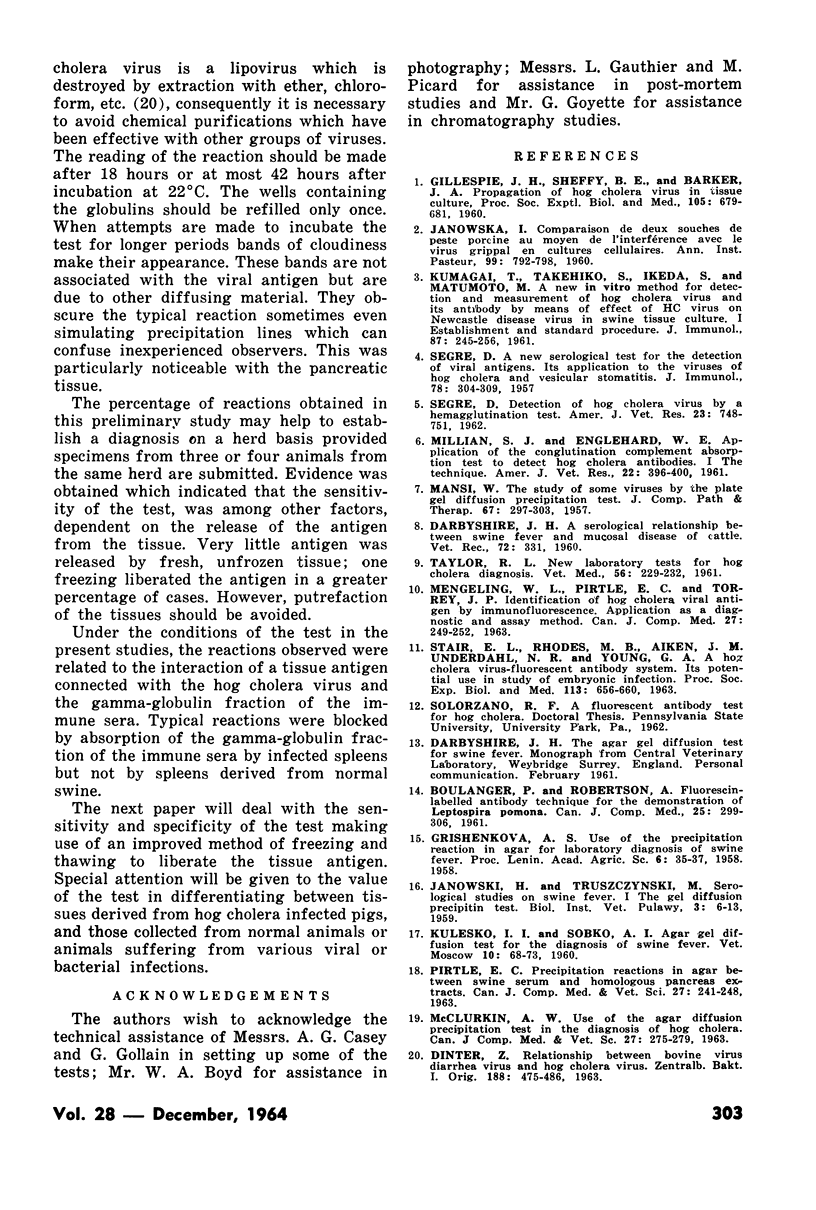
Images in this article
Selected References
These references are in PubMed. This may not be the complete list of references from this article.
- Boulanger P., Robertson A. Fluorescein-Labelled Antibody Technique for the Demonstration of Leptospira Pomona. Can J Comp Med Vet Sci. 1961 Dec;25(12):299–306. [PMC free article] [PubMed] [Google Scholar]
- GILLESPIE J. H., SHEFFY B. E., BAKER J. A. Propagation of hog cholera virus in tissue culture. Proc Soc Exp Biol Med. 1960 Dec;105:679–681. doi: 10.3181/00379727-105-26215. [DOI] [PubMed] [Google Scholar]
- JANOWSKA I. [Comparison of 2 strains of hog cholera virus by means of interference with influenza virus in cell cultures]. Ann Inst Pasteur (Paris) 1960 Nov;99:792–798. [PubMed] [Google Scholar]
- KUMAGAI T., SHIMIZU T., IKEDA S., MATUMOTO M. A new in vitro method (END) for detection and measurement of hog cholera virus and its antibody by means of effect of HC virus on Newcastle disease virus in swine tissue culture. I. Establishment of standard procedure. J Immunol. 1961 Sep;87:245–256. [PubMed] [Google Scholar]
- MANSI W. The study of some viruses by the plate gel diffusion precipitin test. J Comp Pathol. 1957 Jul;67(3):297–303. doi: 10.1016/s0368-1742(57)80029-0. [DOI] [PubMed] [Google Scholar]
- MILLIAN S. J., ENGLEHARD W. E. Application of the conglutination complement absorption test to detect hog cholera antibodies. I. The technique. Am J Vet Res. 1961 May;22:396–400. [PubMed] [Google Scholar]
- McClurkin A. W. Use of the agar diffusion precipitation test in the diagnosis of hog cholera. Can J Comp Med Vet Sci. 1963 Nov;27(11):275–279. [PMC free article] [PubMed] [Google Scholar]
- Mengeling W. L., Pirtle E. C., Torrey J. P. Identification of Hog Cholera Viral Antigen by Immunofluorescence. Application as a Diagnostic and Assay Method. Can J Comp Med Vet Sci. 1963 Oct;27(10):249–252. [PMC free article] [PubMed] [Google Scholar]
- Pirtle E. C. Precipitation Reactions in Agar Between Swine Serum and Homologous Pancreas Extracts. Can J Comp Med Vet Sci. 1963 Oct;27(10):241–248. [PMC free article] [PubMed] [Google Scholar]
- SEGRE D. A new serologic test for the detection of viral antigens: its application to the viruses of hog cholera and vesicular stomatitis. J Immunol. 1957 Apr;78(4):304–309. [PubMed] [Google Scholar]
- SEGRE D. Detection of hog cholera virus by a hemagglutination test. Am J Vet Res. 1962 Jul;23:748–751. [PubMed] [Google Scholar]
- STAIR E. L., RHODES M. B., AIKEN J. M., UNDERDAHL N. R., YOUNG G. A. A hog cholera virus-fluorescent antibody system. Its potential use in study of embryonic infection. Proc Soc Exp Biol Med. 1963 Jul;113:656–660. doi: 10.3181/00379727-113-28455. [DOI] [PubMed] [Google Scholar]



